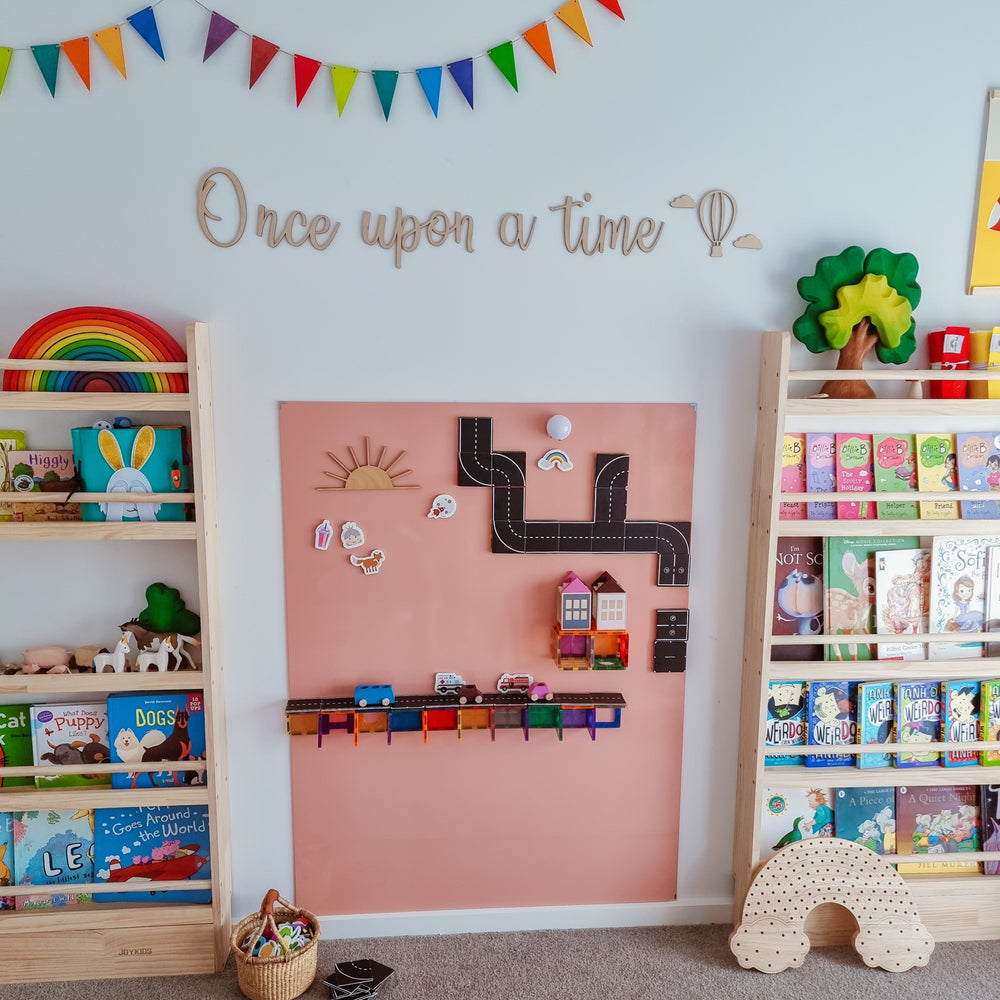The Vibrant Science of Colour
Boost Dopamine & Enhance Child Development with Vertical Play on Maynetic Magnetic Boards
In child development, vertical play on Maynetic magnetic boards offers a unique advantage. Not only does it enhance motor skills and cognitive development, but it also harnesses the science of color to boost dopamine levels—leading to a happier, more engaged learning experience. Discover more benefits in our previous blogs here and here.
The Uplifting Power of Vertical Play
Vertical play encourages children to stand, reach, and move—engaging their muscles and improving core strength. The benefits of vertical surfaces go beyond physical activity:
- Promotes balance and coordination
- Improves fine motor skills and pencil grasp
- Enhances core strength and posture
These benefits create an environment where children thrive physically and cognitively, all while exploring and learning.
Colour: A Spectrum of Benefits
Color isn’t just for decoration—it has a profound impact on mood, learning, and cognitive performance. Each color can affect the brain in different ways:
- Blue calms and boosts productivity, making it perfect for focused activities.
- Red energizes, sharpens attention to detail, and fosters creativity.
By integrating colors like these into a child’s environment, parents and educators can optimize learning while enhancing emotional well-being.
Dopamine: The Hue of Happiness
Dopamine is the brain’s “feel-good” neurotransmitter. Research suggests that color perception can influence dopamine levels, enhancing mood and cognitive function. Higher dopamine levels improve focus, learning, and overall happiness, which is why incorporating color into play is so powerful.
Neurodiversity and the Colour-Dopamine Nexus
For neurodiverse children, like those with ADHD or autism, vibrant colors and engaging play can help regulate dopamine levels. This dynamic environment:
- Helps improve focus, mood, and learning outcomes
- Supports children with neurodiverse profiles by creating a calming, stimulating space
With Maynetic boards, these children can enjoy a learning environment that’s both nurturing and challenging, promoting growth and joy.
Why Choose Maynetic Boards?
The fusion of vertical play and color science on Maynetic boards creates a powerful environment for learning and development. Our boards offer a platform for:
- Engaging physical movement
- Boosting creativity and problem-solving
- Supporting cognitive growth and emotional well-being
Maynetic magnetic boards provide a fun and enriching way for children to explore, learn, and grow.
References
- (2017). Here’s How Colours Really Affect Our Brain And Body, According to Science. www.sciencealert.com/here-s-how-colours-really-affect-our-brain-and-body-according-to-science
- Psychology Today. (2023). How Colors Affect Brain Functioning. www.psychologytoday.com/us/blog/brain-babble/201504/the-color-psychology-marketing-and-branding
- (2015). Dopamine and Colors: Happy People Identify Colors More Accurately. www.newseveryday.com/articles/565/20150911/dopamine-levels-could-influence-a-persons-decision-making.htm
- The Guardian. (2015). Blue moods may be connected to our perception of the colour. theguardian.com/science/2015/mar/29/brain-science-colour-processing-sight-evolution
- Maynetic (n.d.). Why Children Should Work on Vertical Surfaces. https://maynetic.com/blogs/news/why-children-should-work-on-vertical-surfaces
- Maynetic (n.d.). 6 Compelling reasons to Introduce Vertical Play in Early Childhood. https://maynetic.com/blogs/news/10-reasons-to-provide-children-with-vertical-play-opportunities
- The Conversation. (2023). Dopamine is a brain chemical famously linked to mood and pleasure − but researchers have found multiple types of dopamine neurons with different functions. theconversation.com/dopamine-is-a-brain-chemical-famously-linked-to-mood-and-pleasure-but-researchers-have-found-multiple-types-of-dopamine-neurons-with-different-functions-154387
- Psychology Today Australia. (2021). Is There a Link Between Neurodiversity and Mental Health? psychologytoday.com/au/blog/neurodiverse-age/202103/is-there-link-between-neurodiversity-and-mental-health





